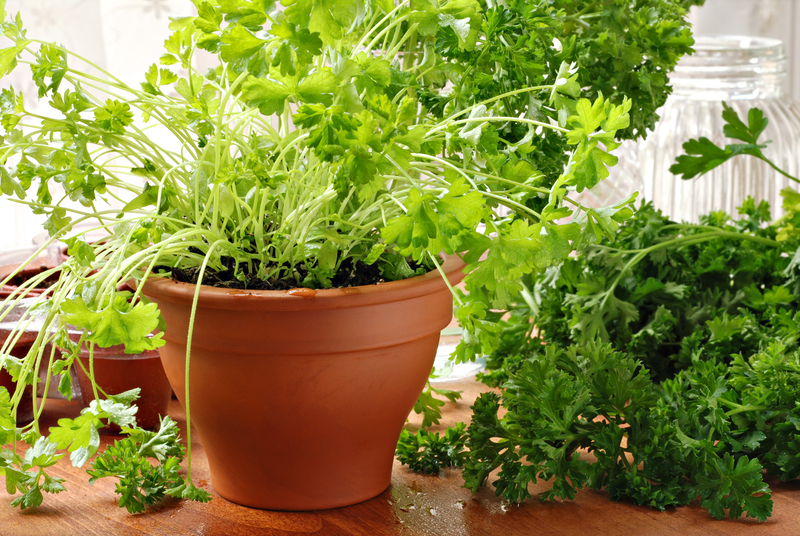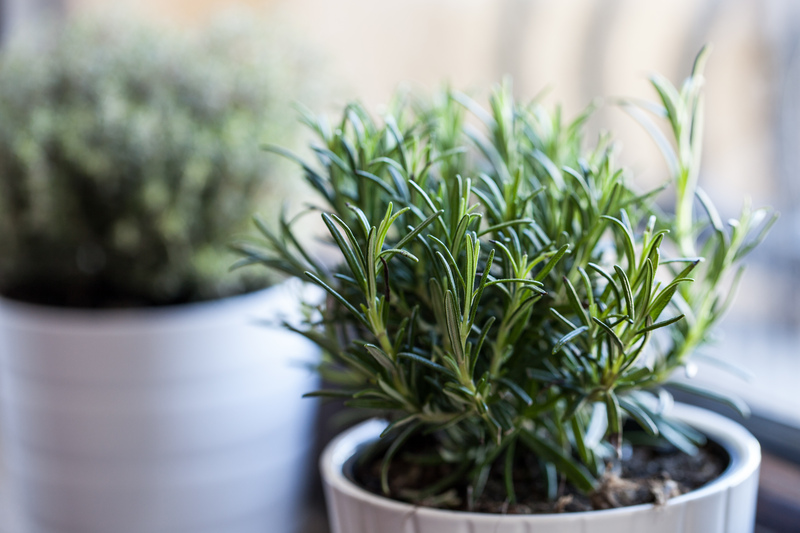The Ultimate Guide to Nurturing Orchids
Posted on 19/05/2025
The Ultimate Guide to Nurturing Orchids
Orchids are famous for their exotic beauty, variety, and elegance, making them one of the most sought-after indoor and outdoor plants worldwide. However, many believe that successfully nurturing orchids is reserved only for expert gardeners. This couldn't be further from the truth. With the right knowledge and techniques, anyone can enjoy the stunning blooms of these remarkable flowers. In this comprehensive guide, you'll discover everything you need to know about taking care of orchids, including tips, tricks, and troubleshooting common issues for thriving, healthy plants.
Understanding Orchids: A Brief Overview
There are over 25,000 species of orchids and more than 100,000 hybrids. These fascinating plants are found on every continent except Antarctica, adapting to varied climates and growing conditions. The two most popular types for home gardeners are:
- Phalaenopsis (Moth Orchid): Known for their broad, flat blooms and ability to flower year-round.
- Cattleya: Famous for their vibrant colors and unique fragrances.
Other favorites include Oncidium, Dendrobium, and Vanda orchids. Each orchid type has its own specific care requirements, but many nurturing basics remain the same.

The Secrets to Thriving Orchids: Essential Care Tips
Nurturing orchids involves a combination of understanding their environment, providing proper care, and maintaining a watchful eye for problems. The following sections will guide you through every aspect of orchid care.
1. Choosing the Right Orchid
Shop at reputable nurseries or garden centers. Look for healthy plants with:
- Firm, green roots visible through transparent pots.
- Strong, unblemished leaves.
- No signs of pests or disease.
Tip: Beginners often find the Phalaenopsis orchid the easiest to care for due to its adaptability.
2. Light: Orchids' Lifeline
Proper lighting is the most vital element in orchid nurturing. Orchids generally require bright, indirect light. This mimics the dappled sunlight of their native habitats.
- Place your orchid near an east- or west-facing window.
- South-facing windows can be too harsh; use sheer curtains if necessary.
- Leaves should be light or medium green--dark green means not enough light; yellow or red tints may suggest too much.
If natural light is limited, supplement with fluorescent or LED grow lights.
3. Perfecting the Watering Process
One of the main reasons orchids fail is overwatering. Always remember:
- Let the potting mix dry out slightly between waterings.
- Use tepid water and water in the morning to allow drying by evening.
- In general, water once a week, more often in hot weather, less in winter.
- Avoid letting roots sit in water to prevent rot.
Pro Tip: Use the soak and drain method--thoroughly moisten the media, then let all excess water drain away.
4. Humidity: Keeping Orchids Comfortable
Most orchids thrive in humidity levels of 50-70%. For indoor growers, achieving the right moisture in the air can be challenging, but simple solutions include:
- Placing a humidity tray (pebble-filled with shallow water) beneath the pot.
- Grouping plants together to naturally boost humidity.
- Using a room humidifier, especially in winter.
Misting is not typically recommended as it can leave water sitting on leaves, encouraging disease.
5. Ideal Temperature for Orchid Growth
Orchids prefer day temperatures of 65-80?F (18-27?C) and night temperatures around 60-65?F (16-18?C). Avoid exposing orchids to sudden drafts or intense heat sources like radiators or direct air conditioning.
The Right Substrate: Orchid Potting Mix
Unlike typical houseplants, orchids do not grow in soil; they require a special potting mix that mimics their natural growing conditions. Common orchid potting materials include:
- Pine bark
- Coconut husk
- Sphagnum moss
- Charcoal
- Perlite
Choose a well-draining, airy medium. The type of orchid determines the appropriate mix, so consult tags or nursery experts if unsure.
How to Fertilize Orchids Effectively
Feeding your orchid the right way can mean the difference between poor growth and lush blooms. Orchids are not heavy feeders, but they benefit from balanced nutrition:
- Use a balanced, water-soluble orchid fertilizer (20-20-20 or similar).
- Fertilize every 2-4 weeks during active growth, less during the dormant season.
- Always water before fertilizing to avoid burning delicate roots.
Remember the rule: "Weakly, weekly." It's better to use diluted fertilizer more often, rather than strong doses occasionally.
Repotting Orchids: When and How?
Repotting allows orchids to thrive by refreshing their growing medium and providing space for spreading roots. Generally, repot:
- Every 1-2 years, or when the potting medium breaks down.
- After blooms fade and the active growth period resumes.
- When roots are crawling out of the pot extensively.
Steps for successful repotting:
- Carefully remove the orchid from its old pot, gently untangling the roots.
- Trim away any dead or rotted roots with sterile scissors.
- Place the orchid into a slightly larger pot with fresh orchid mix, ensuring roots are positioned well.
- Water lightly after repotting, then resume normal care.
Common Orchid Problems and Troubleshooting
Even experienced growers encounter challenges when nurturing orchids. Here are common issues and expert solutions:
Yellowing Leaves
- Overwatering or poor drainage is often to blame. Check roots for rot and adjust watering practices.
- Too much direct sunlight can also scorch leaves, causing yellowing or black spots.
Drooping or Wrinkled Leaves
- Dehydration due to underwatering or root rot prevents water absorption. Assess roots and potting mix.
Root Rot
- Usually caused by excessive moisture or old, broken-down potting mix.
- Repoting in fresh media and removing affected roots is essential.
Buds Dropping Before Opening ("Bud Blast")
- Can result from sudden changes in temperature, humidity, or light.
Pests and Diseases
- Mealybugs, aphids, and scale insects are the most common pests. Remove manually or treat with insecticidal soap.
- Fungal infections can appear as black spots on leaves--improve air circulation and avoid getting leaves wet.
Encouraging Re-Flowering in Orchids
Successfully re-blooming orchids is the ultimate sign of effective care. Encourage reblooming by:
- Providing a drop in nighttime temperatures by 10-15?F (5-8?C) for several weeks, especially in fall.
- Following a proper fertilizing schedule.
- Ensuring adequate light and humidity.
Patience is key; orchids may take several months to rebloom, especially after major stress or repotting.
Expert Orchid Nurturing Tips
- Always use clean, sharp tools to avoid transmitting diseases.
- Rotate your orchids regularly for even light exposure.
- Keep pets and children away from delicate flowers and roots.
- Wipe dust off leaves with a damp cloth to maximize photosynthesis.
- Join orchid-growing communities for support, advice, and plant swaps.
Beyond the Basics: Orchid Varieties and Their Unique Needs
While the guidelines above apply to most common orchids, certain species have special requirements:
Cattleya Care
Needs slightly more light than Phalaenopsis, and prefers drying out between waterings.
Vanda Orchids
Prefer very bright light and frequent watering. Often grown bare-root in baskets instead of pots.
Dendrobiums
Many varieties go dormant in winter and require little to no water until growth resumes in spring.
Oncidium
Require good air movement and are more sensitive to rot.
The Joy of Nurturing Orchids at Home
With patience, observation, and a willingness to adapt, anyone can succeed at orchid nurturing. The secret is to treat each orchid as an individual and respond to its unique needs. As you become more experienced, you'll learn to read the subtle language of leaves, roots, and blooms, ensuring your orchids live long, healthy, and floriferous lives.

Frequently Asked Questions About Growing Orchids
How often should I water my orchid?- Let the potting mix dry out slightly between waterings. For most house orchids, once a week is ideal. Always check the media before watering.
- Misting can cause fungal issues; it's better to increase ambient humidity around the plant.
- Leaf color is a good indicator. Light green leaves mean sufficient light, while dark green suggests it needs more. Watch for pale or scorched leaves, a sign of too much light.
- This is natural for many orchids. Aerial roots help anchor and absorb moisture. Don't trim healthy roots; only remove if they are dead or rotten.
Conclusion: Celebrate the Art of Orchid Nurturing!
Orchid care may seem intimidating at first, but the rewards are well worth the effort. By understanding your plant's needs--from light and water to warmth and fresh air--you set the stage for breathtaking blooms year after year. Whether you're a beginner with your first Phalaenopsis orchid or an enthusiast expanding into rare hybrids, these timeless tips will guide your journey.
Embrace the beauty, intrigue, and joy that comes with nurturing orchids. With practice, your home can become a sanctuary for vibrant colors and unique floral forms. Enjoy each new shoot, every unfurling petal, and the satisfaction of a well-loved orchid thriving under your care.
Happy orchid growing!



